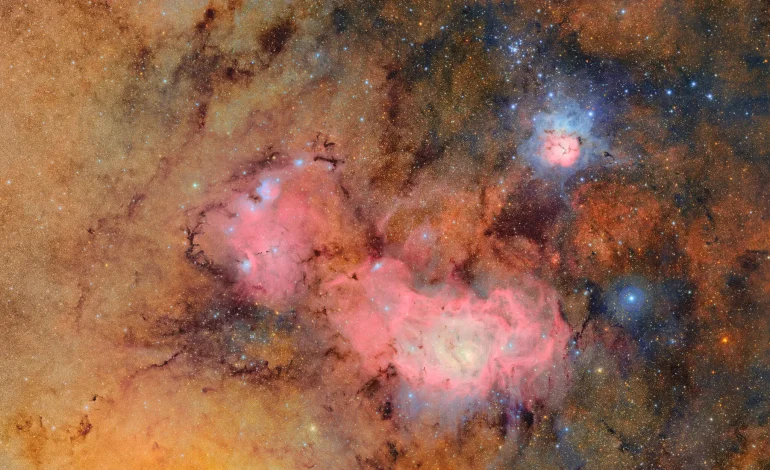Vera Rubin Observatory Unveils First Images, Offering New Window into the Universe

The Vera C. Rubin Observatory has revealed its first images, marking a major milestone for a project decades in the making and poised to revolutionize astronomy.
The observatory, located high in Chile’s Andes mountains, is funded by the US Department of Energy and National Science Foundation and will begin a 10-year survey of the night sky later this year.
Unveiled on Monday, the telescope’s early imagery includes detailed views of the Virgo Cluster—home to galaxies 55 million light-years away—and vibrant depictions of the Trifid and Lagoon nebulae. These glimpses demonstrate the telescope’s unparalleled ability to capture the universe in high resolution, using its 3.2-billion-pixel camera—the most powerful digital camera ever built for astronomy.
Rubin’s wide field of view and fast imaging capabilities will allow it to scan the entire southern sky every few days, capturing dynamic cosmic changes such as supernovae, asteroid movements, and gravitational distortions caused by dark matter. In just 10 hours of observations, the telescope has already discovered more than 2,100 new asteroids, seven of which are near-Earth objects, although none pose a threat.
Dr. Željko Ivezić, the director of construction, described the observatory as “the greatest astronomical discovery machine ever built,” capable of observing more celestial objects than there are people on Earth. The data it gathers will help scientists explore mysteries such as dark matter and dark energy, and could even uncover previously unknown phenomena.
To make the vast volume of data more accessible, the Rubin team developed Skyviewer, an interactive platform allowing users to explore the massive images down to fine detail—even on a smartphone. The system also includes audio features for accessibility.
The observatory’s technical prowess is supported by its unique three-mirror design and precision engineering. Engineers report that Rubin can reposition itself to capture new images roughly every 40 seconds, potentially taking up to 1,000 photographs per night.
Construction of the observatory began a decade ago, and it recorded its first image—albeit imperfect—on April 15. After fine-tuning, engineers quickly achieved full clarity, a moment described by team members as both routine and deeply rewarding.
Named after pioneering astronomer Vera Rubin, who provided key evidence for the existence of dark matter, the observatory carries forward her legacy of pushing scientific boundaries. Her work in a field that once marginalized women laid the foundation for the ambitious goals the observatory now seeks to achieve.
As scientists prepare to begin formal observations, expectations are high that Rubin will not only map the solar system and Milky Way in unprecedented detail but also address long-standing cosmic questions—including the possible discovery of the elusive Planet Nine.
While the observatory is not the largest of its kind, its ability to rapidly and repeatedly survey the night sky makes it uniquely suited to capturing fleeting astronomical events and uncovering unknown aspects of the universe.
“It’s transformative,” said Professor Alis Deason of Durham University. “It will fuel what we do for many, many years.”
The New York Times, the Washington Post, and BBC contributed to this report.









The latest news in your social feeds
Subscribe to our social media platforms to stay tuned